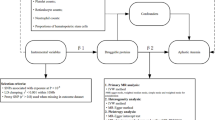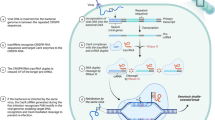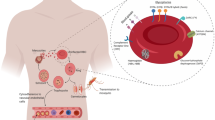Abstract
In this study we have sequenced peptides eluted from a truncated recombinant HLA-A*6602 molecule, and compared their features with data reported for peptides presented in the A*6601 molecule. A striking change in the amino-acid binding preferences was observed at peptide position P1, which interacts with pocket A of the HLA peptide-binding region. For A*6601, aspartic acid and glutamic acid, both of which possess polar acidic side-chains, have been described as auxiliary anchors. This is in marked contrast to A*6602, where we observed serine, which has a neutral polar side-chain, as auxiliary anchor at P1. Accordingly, this shift in the physico-chemical properties of the auxiliary anchor may be best explained by the HLA amino-acid polymorphism at position 163, where arginine (hydrophilic, alkaline) in A*6601 has been replaced by glutamic acid in A*6602. This amino-acid exchange results in a shift towards higher acidity in pocket A, apparently resulting in the loss of preference for acidic auxiliary anchors, and leading to the preference for the neutral amino acid serine. The change of the auxiliary anchor residue at P1 is likely to alter the spectrum of peptides presented by A*6602 compared with A*6601, which may result in allogenicity in the case of a mismatch in allogeneic stem cell transplantation.

Similar content being viewed by others
References
Altschul SF, Gish W, Miller W, Myers EW, Lipman DJ (1990) Basic local alignment search tool. J Mol Biol 215:403–410
Barber LD, Gillece-Castro B, Percival L, Li X, Clayberger C, Parham P (1995) Overlap in the repertoires of peptides bound in vivo by a group related class I HLA-B allotypes. Curr Biol 5:179–190
Barnstable CJ, Bodmer WF, Brown G, Galfre G, Milstein C, Williams AF, Ziegler A (1978) Production of monoclonal antibodies to group A erythrocytes; HLA and other human cell surface antigens — new tools for genetic analysis. Cell 14:9–20
Barouch D, Friede T, Stevanovic S, Tussey L, Smith K, Rowland-Jones S, Braud V, McMichael A, Rammensee HG (1995) HLA-A2 subtypes are functionally distinct in peptide binding and presentation. J Exp Med 182:1847–1856
Bluestone JA, Kaliyaperumal A, Jameson S, Miller S, Dick R (1993) Peptide-induced changes in class I heavy chains alter allorecognition. J Immunol 151:3943–3953
Brodsky F, Parham P, Barnstable C, Crumpton M, Bodmer W (1979) Monoclonal antibodies for analysis of the HLA system. Immunol Rev 47:3–61
Chelvanayagam C, et al (1996) A roadmap for HLA-A, HLA-B, and HLA-C peptide binding specificities. Immunogenetics 45:15–26
Dumrese T, Stevanovic S, Seeger FH, Yamada N, Ishikawa Y, Tokunaga K, Takiguchi M, Rammensee HG (1998) HLA-A26 subtype A pockets accommodate acidic N-termini of ligands. Immunogenetics 48:350–353
Elsner HA, DeLuca D, Strub J, Blasczyk R (2003) HistoCheck: rating of HLA class I and II mismatches by an internet-based software tool. Bone Marrow Transplant (in press)
Falk K, Rötzschke O, Stevanovic S, Jung G, Rammensee HG (1991) Allele-specific motifs revealed by sequencing of self-peptides eluted from MHC molecules. Nature 351:290–296
Falk K, Rötzschke O, Takiguchi M, Grahovac B, Gnau V, Stevanovic S, Jung G, Rammensee HG (1994) Peptide motifs of HLA-A1, -A11, -A31, and -A33 molecules. Immunogenetics 40:238–241
Falk K, Rötzschke O, Takiguchi M, Gnau V, Stevanovic S, Jung G, Rammensee HG (1995a) Peptide motifs of HLA-B38 and B39 molecules. Immunogenetics 41:162–164
Falk K, Rötzschke O, Takiguchi M, Gnau V, Stevanovic S, Jung G, Rammensee HG (1995b) Peptide motifs of HLA-B51, -B52 and B78 molecules, and implications for Behçet’s disease. Int Immunol 7:223–228
Fleischhauer K, Avila D, Vilbois F, Traversari C, Bordignon C, Wallny HJ (1994) Characterization of natural peptide ligands for HLA-B*4402 and HLA-B*4403: implications for peptide involvement in allorecognition of a single amino acid change in the HLA-B44 heavy chain. Tissue Antigens 44:311–317
Garrett TP, Saper MA, Bjorkman PJ, Strominger JL, Wiley DC (1989) Specificity pockets for the side chains of peptide antigens in HLA-Aw68. Nature 342:692–696
Grommé M, Neefjes J (2002) Antigen degradation or presentation by MHC class I molecules via classical and non-classical pathways. Mol Immunol 39:81–202
Heath WR, Kane KP, Mescher MF, Sherman LA (1991) Alloreactive T cells discriminate among a diverse set of endogenous peptides. Proc Natl Acad Sci USA 88:5101–5105
Herman J, Jongeneel V, Kuznetsov D, Coulie PG (1999) Differences in the recognition by CTL of peptides presented by the HLA-B*4402 and the HLA-B*4403 molecules with differ by a single amino acid. Tissue Antigens 53:111–121
Hirosawa M, Hoshida M, Ishikawa M, Toya T (1993) MASCOT: multiple alignment system for protein sequences based on three-way dynamic programming. Comput Appl Biosci 9:161–167
Kavathas P, Bach FH, DeMars R (1980) Gamma ray-induced loss of expression of HLA and glyoxalase I alleles in lymphoblastoid cells. Proc Natl Acad Sci USA 77:4251–4255
Kikuchi A, Sakaguchi T, Miwa K, Takamiya Y, Rammensee HG, Kaneko Y, Takiguchi M (1996) Binding of nonamer peptides to three HLA-B51 molecules which differ by a single amino acid substitution in the A-pocket. Immunogenetics 43:268–276
Kranz DM (2000) Incompatible differences: view of an allogeneic pMHC-TCR complex. Nat Immunol 1:277–278
Krausa P, Münz C, Keilholz W, Stevanovic S, Jones EY, Browning M, Bunce M, Rammensee HG, McMichael A (2000) Definition of peptide binding motifs amongst the HLA-A*30 allelic group. Tissue Antigens 56:10–18
Macdonald WA, Purcell AW, Mifsud NA, Ely LK, Williams DS, Chang L, Gorman JJ, Clements CS, Kjer-Nielsen L, Koelle DM, Burrows SR, Tait BD, Holdsworth R, Brooks AG, Lovrecz GO, Lu L, Rossjohn J, McCluskey J (2003) A naturally selected dimorphism within the HLA-B44 supertype alters class I structure, peptide repertoire, and T-cell recognition. J Exp Med 198:679–691
Madrigal JA, Hildebrand WH, Belich MP, Benjamin RJ, Little AM, Zemmour J, Ennis PD, Ward FE, Petz-Erler ML, du Troit ED, Parham P (1993) Structural diversity in the HLA-A10 family of alleles: correlations with serology. Tissue Antigens 41:72–80
Natarajan K, Li H, Mariuzza RA, Margulies DH (1999) MHC class I molecules, structure and function. Rev Immunogenet 1:32–46
Parker KC, Bednarek MA, Hull LK, Utz U, Cunningham B, Zweerink HJ, Biddison WE, Coligan JE (1992) Sequence motifs important for peptide binding to the human MHC class I molecule, HLA-A2. J Immunol 149:3580–3587
Prilliman KR, Jackson KW, Lindsey M, Wang J, Crawford D, Hildebrand W (1999) HLA-B15 peptide ligands are preferentially anchored at their c termini. J Immunol 162:7277–7284
Rötzschke O, Falk K, Stevanovic S, Jung G, Rammensee HG (1992) Peptide motifs of closely related HLA class I molecules encompass substantial differences. Eur J Immunol 22:2453–2456
Rötzschke O, Falk K, Stevanovic S, Gnau V, Jung G, Rammensee HG (1994) Dominant aromatic/aliphatic C-terminal anchor in HLA-B*2702 and B*2705 peptide motifs. Immunogenetics 39:74–77
Rudolph MG, Speir JA, Brunmark A, Mattsson N, Jackson MR, Peterson PA, Teyton L, Wilson IA (2001) The crystal structures of K(bm1) and K(bm8) reveal that subtle changes in the peptide environment impact thermostability and alloreactivity. Immunity 14:231–242
Saper MA, Bjorkman PJ, Wiley DC (1991) Refined structure of the human histocompatibility antigen HLA-A2 at 2.6 Å resolution. J Mol Biol 219:277–319
Seeger FH, Schirle M, Gatfield J, Arnold D, Keilholz W, Nickolaus P, Rammensee HG, Stevanovic S (1999) The HLA-A*6601 peptide motif: prediction by pocket structure and verification by peptide analysis. Immunogenetics 49:571–576
Sesma L, Montserrat V, Lamas JR, Marina A, Vázquez J, Lopez de Castro JA (2002) The peptide repertoires of HLA-B27 subtypes differentially associated to spondylarthropathy (B*2704 and B*2706) differ by specific changes at three anchor positions. J Biol Chem 277:16744–16749
Shimizu Y, De Mars R (1989) Production of human cells expressing individual transferred HLA-A, -B, -C genes using an HLA-A, -B, -C null human cell line. J Immunol 142:3320–3328
Smith KD, Epperson DF, Lutz CT (1996) Alloreactive cytotoxic T-lymphocyte-defined HLA-B7 subtypes differ in peptide antigen presentation. Immunogenetics 43:27–37
Sudo T, Kamikawaji N, Kimura A, Date Y, Savoie CJ, Nakashima H, Furuichi E, Kuhara S, Sasazuki T (1995) Differences in MHC class I self peptide repertoires among HLA-A2 subtypes. J Immunol 155:4749–4756
Acknowledgements
The authors would like to thank Joachim Kuhn for his critical advice concerning the HPLC analysis, and Eva Szczepanek for excellent technical assistance. We acknowledge Vera Rebmann for isoelectric focusing analyses, and Hidde Ploegh for providing the mAb HC10. This study was supported by a grant from the Deutsche Forschungsgemeinschaft (SFB 265 2001, Projekt A12).
Author information
Authors and Affiliations
Corresponding author
Rights and permissions
About this article
Cite this article
Bade-Doeding, C., Elsner, HA., Eiz-Vesper, B. et al. A single amino-acid polymorphism in pocket A of HLA-A*6602 alters the auxiliary anchors compared with HLA-A*6601 ligands. Immunogenetics 56, 83–88 (2004). https://doi.org/10.1007/s00251-004-0677-y
Received:
Revised:
Published:
Issue Date:
DOI: https://doi.org/10.1007/s00251-004-0677-y




